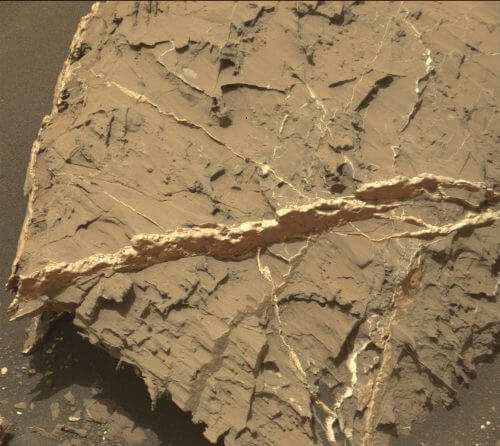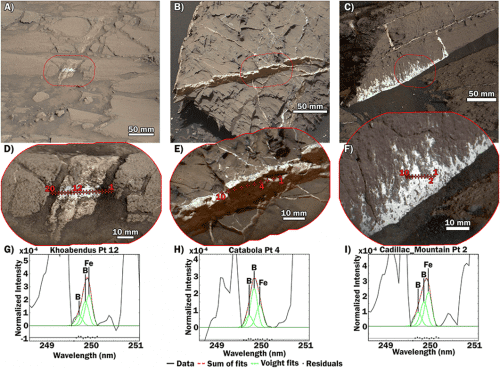For the first time, researchers were able to directly identify the element boron on the surface of Mars, thanks to measurements made by the rover Curiosity. The discovery of the element strengthens the possibility that the ancient environment on Mars supported the existence of life, since it is able to stabilize the sugar ribose, a central component of the RNA molecule.

In a new study Published On Tuesday in the journal Geophysical Research Letters, American researchers from the Los Alamos National Laboratory report that for the first time the element boron was discovered directly on Mars. boron has been discovered before in a meteorite from Mars, but this is the first time the discovery has been made There is no place, thanks to measurements made by the Mars rover Curiosity. It is worth noting that the discovery has already been revealed in December 2016, but only now is it detailed in an article in a scientific journal.
Curiosity made the measurements in an area known as Gale Crater, which it has been studying since it landed on Mars five years ago. The age of the crater is estimated at about 3.8 billion years, and the researchers believe that in this early period of Mars it contained a large lake of liquid water.
The boron was detected using the rover's laser gun, the machine ChemCam, which fires laser beams towards a concentrated point in a distant rock, in order to vaporize part of it. After that, the device examines the radiation spectrum from the plasma created, in order to determine the chemical composition of the rock.
According to the researchers, the discovery of boron is a reinforcement of the possibility that life could have formed in the early environment of Mars. This is because boron, which turns into borate in an aqueous solution, can react with the sugar ribose and stabilize it at a sufficient level, in order to allow the formation of RNA molecules.

The RNA molecule is found in all living things, and is used to express the genetic information contained in DNA. One of the theories for the development of life on Earth, known as "The world of RNA", raises the possibility that the first living creatures were not based on DNA, but only on RNA strands, which could hold both hereditary information and reproduce themselves.
"Because borates may play an important role in the formation of RNA - one of the building blocks of life - the discovery of boron on Mars strengthens the possibility that life could have once formed on Mars," said Patrick Gasda, a postdoctoral researcher at Los Alamos National Laboratory and lead author of the paper. . "Borates are one possible bridge from simple organic molecules to RNA. Without RNA, you have no life. Boron's inventions tell us that if organic substances were present on Mars, these chemical reactions could have been formed."
Boron was observed by Curiosity within mineral veins of calcium sulfate (calcium sulfate) in various rocks in Gale Crater. The researchers are not sure about the exact process by which the boron got into these mineral veins. In their article, they propose two slightly different models for the process, but the basic principle in both is the same - boron was transported and dissolved in the ancient lake water of Gale Crater, by the weathering of volcanic rocks from the watershed of the crater. Later, when the lake dried up, underground water carried the boron into cracks in the bedrock, where the mineral veins formed.
According to the researchers, the conditions of the underground water, which carried the boron, were apparently favorable for the existence of life - their temperature ranges from 0 to 60 degrees Celsius and a pH level that ranges from neutral to basic.

This discovery joins many other discoveries made by Curiosity in Gale Crater, and show that in the distant past of Mars it contained a lake of liquid water, the conditions of which were very likely suitable for the existence of life. After a five-year journey, the same robotic SUV noted last month, Curiosity continues on its way towards the summit of Mount Sharp, a mountain 5.5 km high, located in the center of Gale Crater. The researchers hope that as the rover climbs up the mountain, it will reach younger geological layers, and thus they will be able to document the process that turned Mars from a hot and wet world more reminiscent of modern Earth, to the arid and frozen desert it is today.
See more on the subject on the science website:

One response
The environment supported, nothing more.